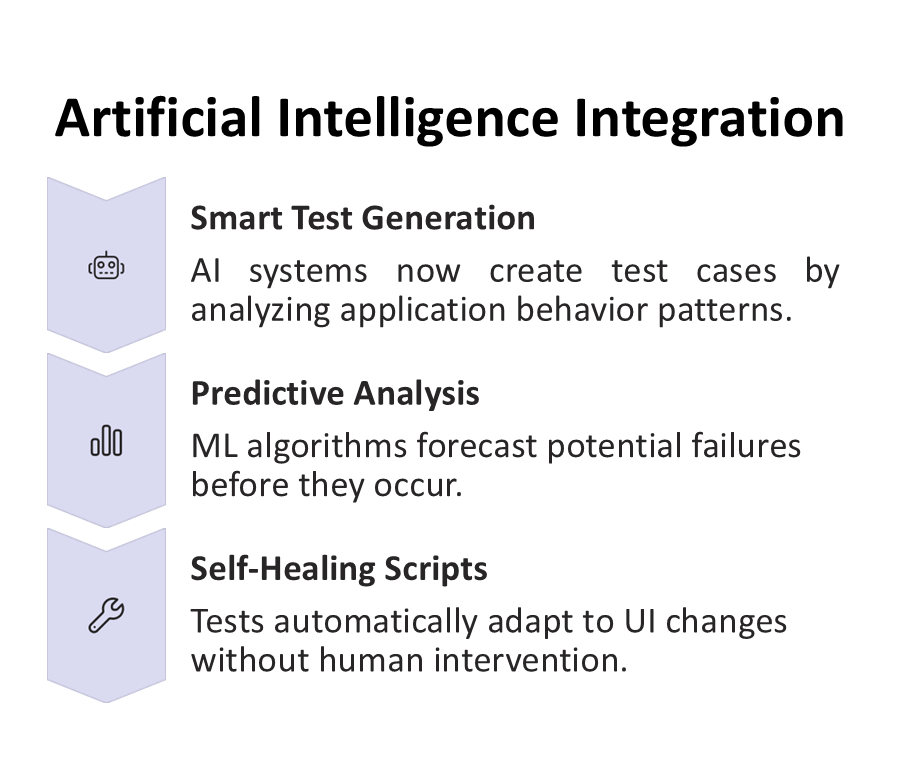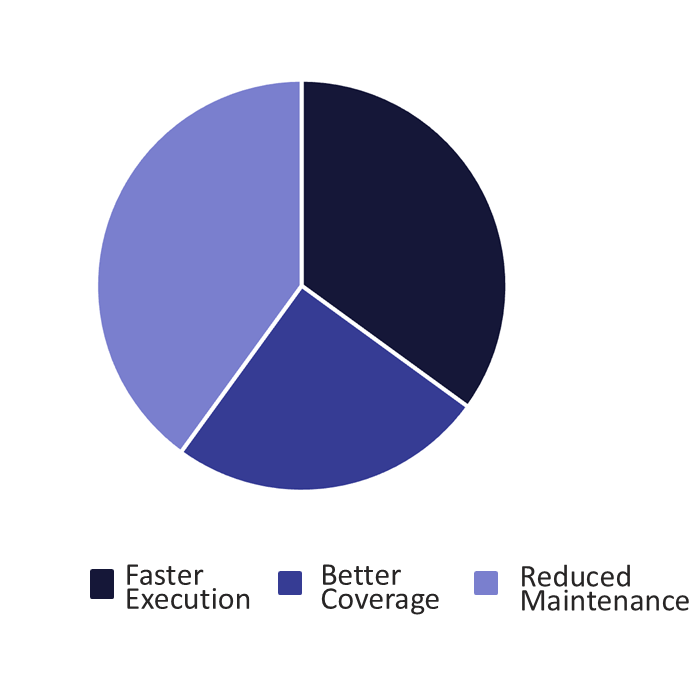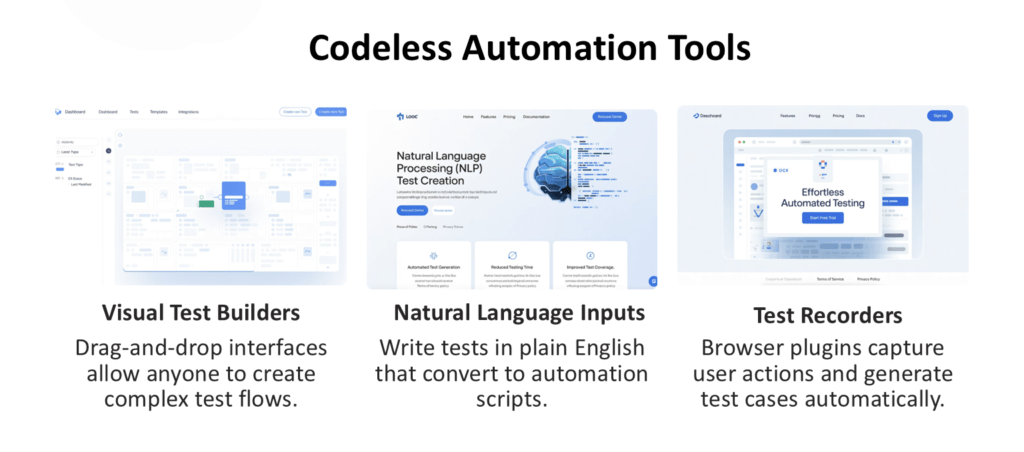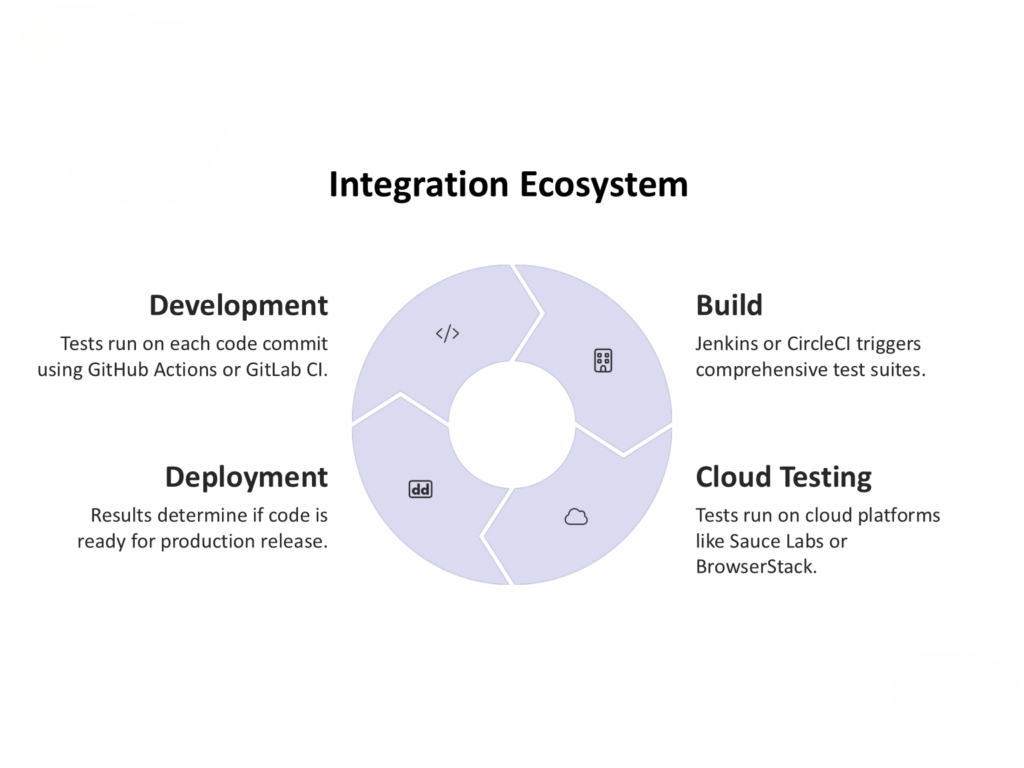AI & ML Are Reshaping Selenium Automation

Welcome to our exploration of how emerging technologies are transforming automated testing in 2025 and beyond.
The growing use of AI in our daily lives naturally extends to the field of test automation. The integration of AI and Machine Learning (ML) in testing is no longer a surprise, it’s becoming a necessity.
AI-driven test automation brings several advantages. For instance, AI can assist in generating new test cases, reducing the manual effort involved and accelerating delivery timelines.
Moreover, ML-based behaviour and predictive analysis can help identify potential points of failure or bottlenecks in the UI/UX. These insights allow teams to proactively address issues, leading to a more seamless user experience.


Machine learning has proven to be a highly effective tool in the field of automation. By leveraging machine learning algorithms, tests can run faster and require fewer resources, thereby significantly increasing overall efficiency.
Several teams have reported up to a 40% reduction in test maintenance time. This allows them to focus more on strategic and high-value tasks, rather than spending excessive time on maintaining tests.
Efficiency Gains
ML-powered tests run faster and require fewer resources.
Teams report up to 40% reduction in test maintenance time.

1.Visual Test Builders: Drag-and-drop interfaces allow anyone to create complex test flows.
2. Natural Language Inputs: Write tests in plain English that convert to automation scripts.
3. Test Recorders: Browser plugins capture user actions and generate test cases automatically.

Democratizing Test Automation with AI and ML
Non-Developers Now Automate
- Business analysts and manual QA specialists create automated tests without coding knowledge.
Reduced Learning Curve
- New team members become productive in days rather than months.
Cross-Functional Collaboration
- Product owners directly contribute to test scenarios, improving relevance.
Selenium 4 Advantages
- W3C WebDriver Standard Support
- Selenium 4 aligns completely with the W3C WebDriver protocol, which improves stability and consistency across different browsers.
- This reduces dependency on browser-specific drivers, leading to more reliable test execution.
- Improved Selenium Grid
- Selenium Grid is now easier to set up and more scalable.
- It supports Docker-based distributed testing and has a new UI dashboard for monitoring test sessions.
- Relative Locators
- Selenium 4 introduces Relative Locators (formerly called Friendly Locators), which allow testers to locate elements in relation to other elements (e.g., above, below, near, toLeftOf, toRightOf).
- This simplifies the process of writing more human-readable and flexible locators.
- Enhanced Developer Experience
- Improved IDE support, especially through Selenium IDE, which has been rebuilt with:
- Cross-browser support
- Plugins and extensions
- Better debugging and recording features
- Better Debugging and Observability
- New Chrome DevTools Protocol (CDP) integration allows you to:
- Access browser logs and network requests
- Emulate geolocation and device mode
- Capture performance metrics and screenshots
- Improved Documentation
- The official Selenium docs have been significantly updated, with better examples, use cases, and developer guidance.
- Native Support for Chromium-Based Browsers
- Improved handling and compatibility with Chrome and Edge, taking full advantage of features provided by the Chromium engine.

2025: More AI-powered plugins enter the ecosystem. Codeless tools gain enterprise adoption.
2026: Selenium 5 introduces native AI capabilities. Full cloud-native testing becomes standard.
2027: Autonomous testing platforms emerge. Tests self-optimize based on application usage patterns.

The blog is powered by CPSAT, a certification on Selenium Ecosystem. We have two upcoming events on the Selenium ecosystem to know more please visit ataevents.org








